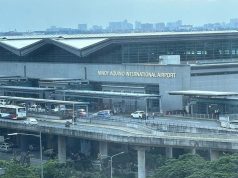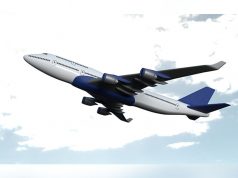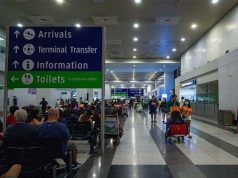
The proposed terminal fee hike in Manila’s premier airport for 2019 sparked criticisms among many Filipinos for having to pay more for substandard services.
This came months after the fiasco that ensued from the crash landing of a plane owned by Xiamen Air that stranded thousands of passengers.
General manager Ed Monreal of the Manila International Airport Authority cited the rising maintenance and operational costs of the airport as the reason for the price increase.
An increase from P200 to P300 in domestic flights and from P550 to P750 in international flights of terminal fees of the Ninoy Aquino International Airport will be collected starting April 2019.
This excludes the travel tax worth P1,620 for economy class passengers and P2,700 for first class passengers for people leaving the country.
This proposal concerned many Filipinos because it will be an additional burden should it be implemented in the near future.
Tigas ng mukha nitong @DOTrPH magtaas Terminal Fee sa NAIA. Kala mo kagandahan ng airport.
And syempre paglalaban nila na para sa improvement kuno. Haha ulol, improve niyo muna bago kayo maningil.
Gatas pa more! Wala yata kasi makukuhang bonus 😂
— Christian (@giographic_epic) October 31, 2018
The additional charge will be reflected on the passenger’s plane tickets.
Discussions on airport improvement
For Jose Clemente III of the Tourism Congress of the Philippines, the amount is also not discouraging to travelers.
“The amount is not that much to make a ripple as far as discouraging people from traveling,” Clemente told The STAR.
Senator Grace Poe, however, questioned the move and said that the authorities should first focus on improving the airport services to the passengers before the charges.
“Terminal Fee’ is the popular term for ‘Passenger Service Charge.’ I take it that the most important words are ‘passenger’ and ‘service.’ Before focusing on the ‘charge’ part, maybe it is best for MIAA and NAIA to first focus on ‘passenger service,” Poe said.
She cited the incident with the Xiamen Air plane that paralyzed operations at the airport and stranded thousands of passengers in the terminals for one week.
Last August 2018, a Boeing 737-8000 that was landing at NAIA overshot the runway.
This resulted in the cancellation of more than 200 flights from different airlines and affected around 13,000 passengers.
Aside from the Chinese aircraft’s mistake, bad weather conditions and miscommunication among pilots and personnel were also factors that caused the massive pile-up of passengers.
Poe, who heads the Senate committee on public services, suggested that there should be a public consultation on this new policy before MIAA implements it.
“Another reason why the holding of public hearings is a must is the recent imposition of fuel charges on Filipino air travellers. There are multiple taxes and fees embedded in a ticket, including travel tax,” she said.
Monreal reasoned that the new terminal fee is also less compared to other countries and in other local airports
Terminal fees in Singapore is P1,867, in Thailand is P1,174 and in Vietnam is P742.
In Mactan-Cebu International Airport, international flights cost P850 while domestic ones are worth P300.
Monreal also said that the country’s premier gateway is no longer part of the “worst list,” thus making it necessary to have a price hike.
Last March, the 70-year-old NAIA was dubbed as among the most improved airports in the world, according to London-based Skytrax.
NAIA rehabilitation status
There is still no green light for the much-needed rehabilitation project of NAIA.
The OPS status was given to a consortium of seven conglomerates—Aboitiz InfraCapital Inc., AC Infrastructure Holdings Corp., Alliance Global Group Inc., Asia’s Emerging Dragon Corp., Filinvest Development Corp., JG Summit Holdings Inc. and Metro Pacific Investments Corp.
The NAIA consortium is only waiting for the notice to proceed before it can start construction.
The target year for the first phase is 2020.









